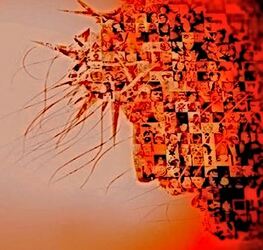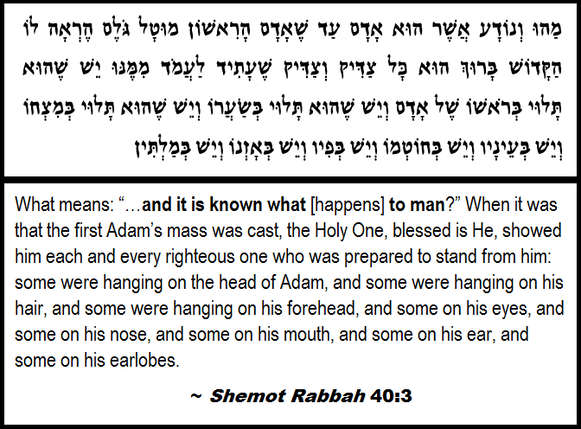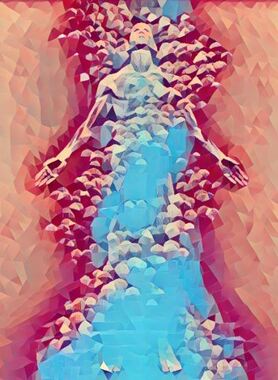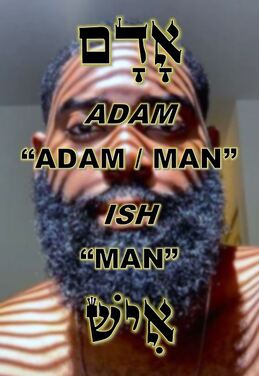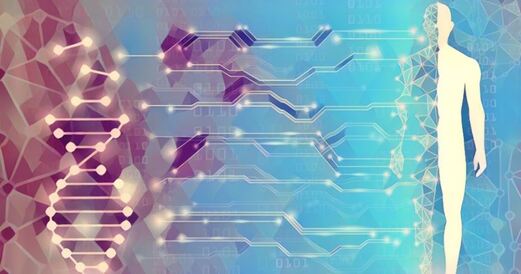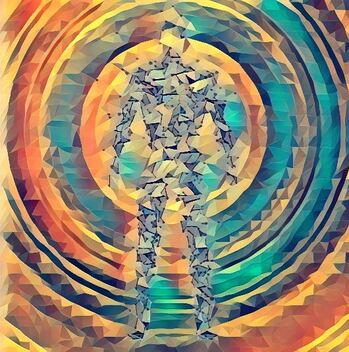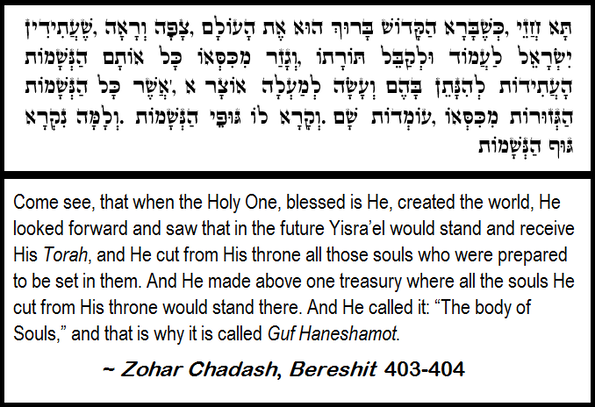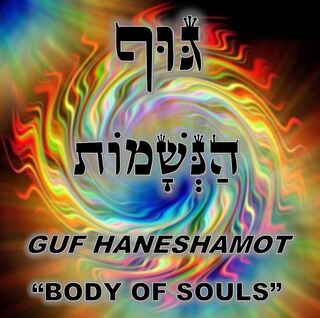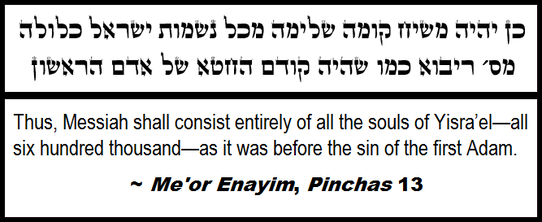GUF HANESHAMOT
by Jeremy Chance Springfield
8/2/2021
Paul’s letters address many topics, but one in particular is returned to repeatedly. In four out of the seven different congregations to whom he wrote, Paul spoke of the concept of believers being the “body” of the Messiah. In those scattered but frequent references, he mentions this concept in various contexts and details, but the core notion is the same throughout: believers somehow spiritually constitute Messiah’s body on this earth!
The most common interpretation of this is that believers are a “group” or “congregation” working together, united in spirit and focus to fulfill the Messianic goals in this world.
The most common interpretation of this is that believers are a “group” or “congregation” working together, united in spirit and focus to fulfill the Messianic goals in this world.
While this is not untrue, it fails to account for the Hebraic notions at work behind what Paul was conveying. It must be remembered that he was raised not only in Judaism but also in the rabbinic sect of the Pharisees, brought up by a Pharisee to be a Pharisee (see: Acts 23:6). His learning was also overseen by Gamaliel (see: Acts 22:3), an erudite teacher of Torah revered not only in his mention in the book of Acts 5:34, but also in the historical Talmudic texts of Judaism.

When we read Paul in light of his learning, and with the perception he was relating deep spiritual truths through means of a letter’s limited format, we can appreciate that what was written is the tip of the iceberg regarding what he knew and what was informing his thought process. With precious material at hand of scroll and ink, there was only so much he could include in each letter, and so the Hebraic background of certain ideas he conveyed was not always able to accompany an assertion. Additionally, his readers knew they were dealing with the Jewish religion and the Hebrew Deity, and so they would not have expected his statements to be made in a contextual void. Rather, his claims existed with the context of Jewish thought behind them, even if such went unshared due to the constraints of material and space to explain.
Being so far removed from the proper ancient context, it behooves us now to become reacquainted with the original perspective in which his reference to being a part of the “body” of Messiah was made. Let us look at Paul’s words as preserved in Ephesians 1:22-23 about this topic.
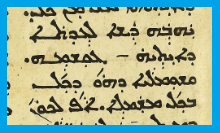
22 … He gave him [to be] the head for the assembly,
23 that is, his body, and the completeness of him who completes all in all.
We also read of this in Ephesians 5:29-30.
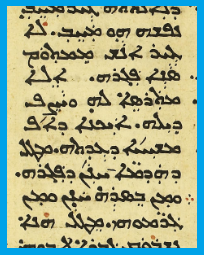
29 For no man ever hated his body, but instead, was nourishing to it, and cared for it, as even the Messiah the assembly,
30 on account that we are the limbs of his Body, and we are from his flesh, and from his bones.
These statements reveal to us two main concepts: the assembly of believers constitute the “body” of the Messiah, and each individual believer has a place in that spiritual body, such as a limb, or flesh, or bone—speaking to the unique role filled by every believer that works together in unity.
The concept presented by Paul stems from a deeply rooted Jewish interpretation of Scripture. To appreciate what Paul is saying to the believers in the various assemblies, let us look first at a Jewish text called Shemot Rabbah, and then the explanation for the thinking will be addressed.
The concept presented by Paul stems from a deeply rooted Jewish interpretation of Scripture. To appreciate what Paul is saying to the believers in the various assemblies, let us look first at a Jewish text called Shemot Rabbah, and then the explanation for the thinking will be addressed.
The text of Shemot Rabbah makes a brief initial quote from Ecclesiastes 6:10, which I have bolded in the English translation. The resulting elaboration of what that means might not be immediately clear to the reader as to why that passage was presented as the basis for the notions presented, but when the Hebrew text is carefully considered, the thinking will make sense.
The word used for “man” in the Biblical passage is not the generic term of ISH, but the weightier term of ADAM.
This is the name given to the first man, and it is this factor which guided the claim of the Midrash: do not read “man,” but read Adam! The idea being it is known what happens to Adam, for he must have been shown all who were a part of him! Those souls attached to him are described as being linked to the various parts of his body.
This unique Jewish insight into the original state of Adam is therefore what Paul was basing his own claims on about believers being the Body of the Messiah, as we see very similar language used in 1st Corinthians 12:12-20.

12 For just as the body is one, and has in it many limbs, but every limb of the body - while many - is one body, thus even is the Messiah.
13 For even we – all of us – by one Spirit to one body were immersed, whether Yihudaye, and whether Armaye, and whether a slave, and whether a son of freedom; and all drank of one Spirit.
14 For even the body is not one limb, but many.
15 For if the foot should say that, “On account I am not the hand, I am not from the body itself,” – on this account is it not from the body?
16 And if the ear should say that, “Since I am not the eye, I am not from the body itself,” – on this account is it not from the body?
17 For if the entire body were eyes, where would be the hearing? And if the entirety were the hearing, where would be the smelling?
18 Yet, now Alaha has placed every single one of the limbs in the body as He has desired.
19 Yet, if they had all been one limb, where would be the body?
20 Yet, now the limbs are many, yet the body is one.
13 For even we – all of us – by one Spirit to one body were immersed, whether Yihudaye, and whether Armaye, and whether a slave, and whether a son of freedom; and all drank of one Spirit.
14 For even the body is not one limb, but many.
15 For if the foot should say that, “On account I am not the hand, I am not from the body itself,” – on this account is it not from the body?
16 And if the ear should say that, “Since I am not the eye, I am not from the body itself,” – on this account is it not from the body?
17 For if the entire body were eyes, where would be the hearing? And if the entirety were the hearing, where would be the smelling?
18 Yet, now Alaha has placed every single one of the limbs in the body as He has desired.
19 Yet, if they had all been one limb, where would be the body?
20 Yet, now the limbs are many, yet the body is one.
This notion is seen also to be interpreted in similar fashion as the word ADAM is found in Ezekiel 34:30.
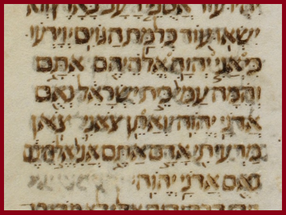
30 “And they shall know that I, YHWH their Elohim, am with them, and they are My people—the House of Yisra’el,” says Master YHWH.
31 “And you, My flock, the flock from My pasture, are Adam, and I am your Elohim,” says Master YHWH.
31 “And you, My flock, the flock from My pasture, are Adam, and I am your Elohim,” says Master YHWH.
Just as with Ecclesiastes 6:10, this passage links the assembly of Israel to Adam, stating it as pointedly as can be: Israel is Adam, meaning the souls of the people originated in the body of Adam in the beginning of time!
The concept of souls connected to a spiritual body is also preserved in the Jewish text of the Zohar Chadash, where a little further information is shared.
The text refers to this spiritual nature as GUF HANESHAMOT “The Body of Souls.” From this place in the original spiritual nature of Adam all souls come into this world. We thus see a unique link between Adam, in whose body originated all souls, and the Messiah, in whom all redeemed souls are referred to as His “body.”
This place referred to as “The Body of Souls” is mentioned also in the Talmud and connects it to the coming of the Messiah.
Quoting Isaiah 57:16, we see the Talmud promotes the notion that all souls are inherently a part of Adam and must manifest as determined before the Messiah can come. This is why Paul speaks of the body of Messiah: what was lost in the body of Adam is being regained in the body of the Messiah, reformed and restored to the glory originally intended.
Paul also referred to this link in the New Testament passage of 1st Corinthians 15:22.
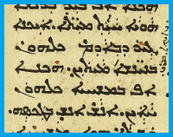
For as that in Adam every son of man dies, thus also in Messiah all live;
Just as all the souls were found in the body of Adam, so too in the body of Messiah are found the souls of His people! Rabbi Menachem Nachum wrote of this truth conveyed by Paul in his work, Me’or Enayim.
We can appreciate what it means to be part of the body of Messiah, for it is the restoration process that heals Adam by the great mercies of the Holy One. Attached to Yeshua, we are able to be included in the assembly in a pure and holy manner. Paul thus speaks of this inclusion in the body at last in Ephesians 5:25-27.
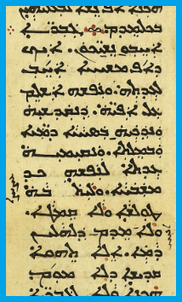
25 Husbands, you must love your wives, as that even the Messiah was loving to his assembly, and delivered up his soul concerning its presence,
26 that he should consecrate it, and that he should purify it in the washing of the water, and in the Word,
27 and that he might establish the assembly for his soul, where it is praiseworthy, and in which is no defilement, and no wrinkle, and no thing similar to these, but instead, that it should be consecrated without blemish.
26 that he should consecrate it, and that he should purify it in the washing of the water, and in the Word,
27 and that he might establish the assembly for his soul, where it is praiseworthy, and in which is no defilement, and no wrinkle, and no thing similar to these, but instead, that it should be consecrated without blemish.
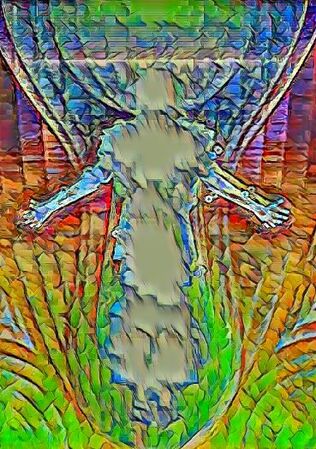
Yeshua's righteousness allows believers to attach to Him and be restored in standing before the Holy One in a way that would not be possible merely by relying on their own inadequate goodness. The souls marred by Adam's insurrection against holiness and divine purpose are able to be brought near again into conformity to that ancient intention for man by joining the Messiah in His act of healing what has been wounded in mankind.
The gracious blessing of being included in the “body” of Messiah means all believers are included in the righteousness of His own unmatched merit before the Creator, purified from our own lack and shortcomings and set exactly where we are supposed to be in the assembly of the faithful.
The explanation of Israel in connection to Adam is thus seen as informing Paul’s own assertions throughout his letters. Believers consist of the Body of the Messiah, the GUF HANESHAMOT: a body of souls restored to harmony and unity with the Holy One through the Second Adam!
The gracious blessing of being included in the “body” of Messiah means all believers are included in the righteousness of His own unmatched merit before the Creator, purified from our own lack and shortcomings and set exactly where we are supposed to be in the assembly of the faithful.
The explanation of Israel in connection to Adam is thus seen as informing Paul’s own assertions throughout his letters. Believers consist of the Body of the Messiah, the GUF HANESHAMOT: a body of souls restored to harmony and unity with the Holy One through the Second Adam!
All study contents Copyright Jeremy Chance Springfield, except for graphics and images, which are Copyright their respective creators.
